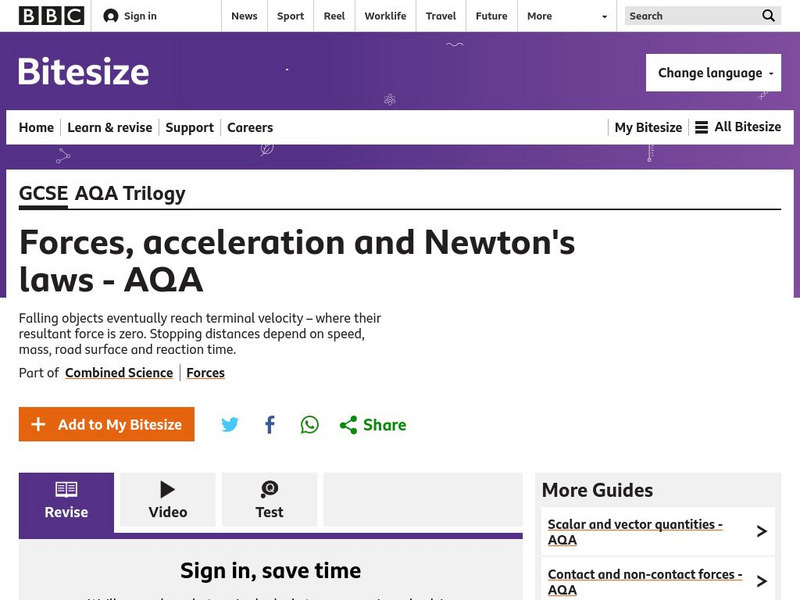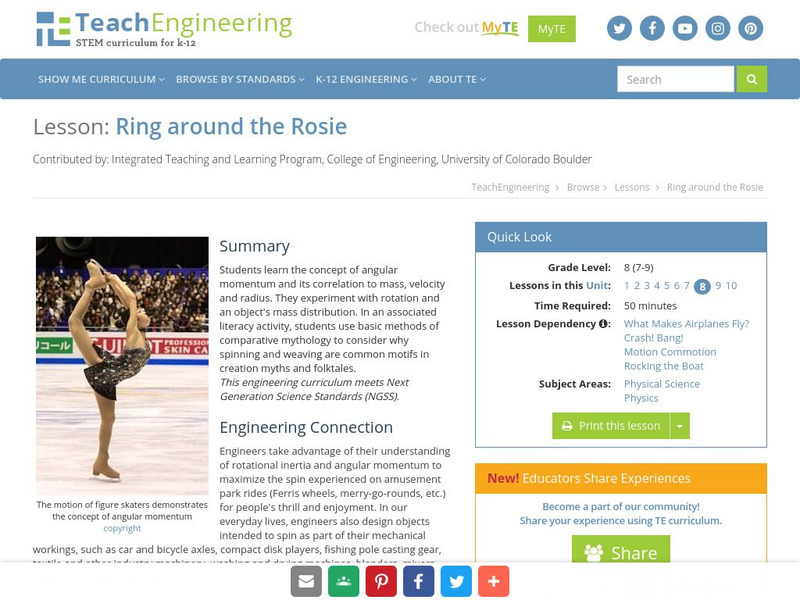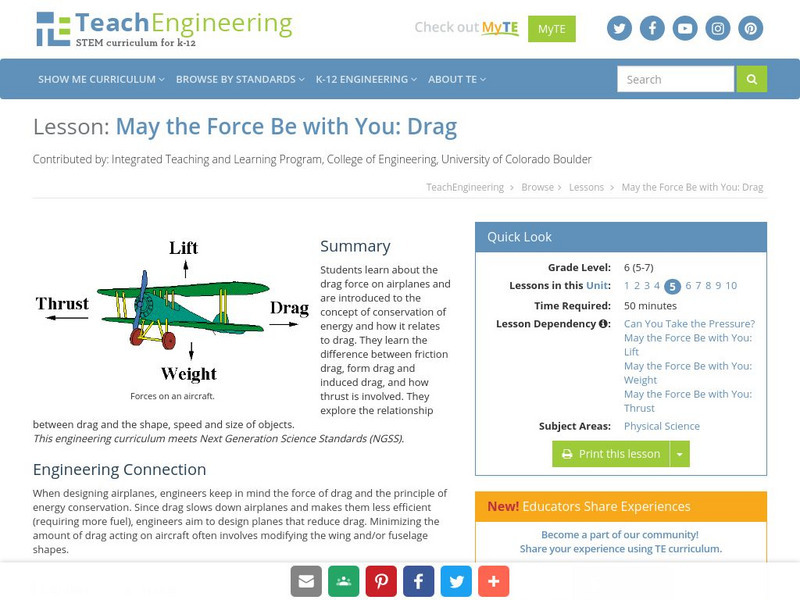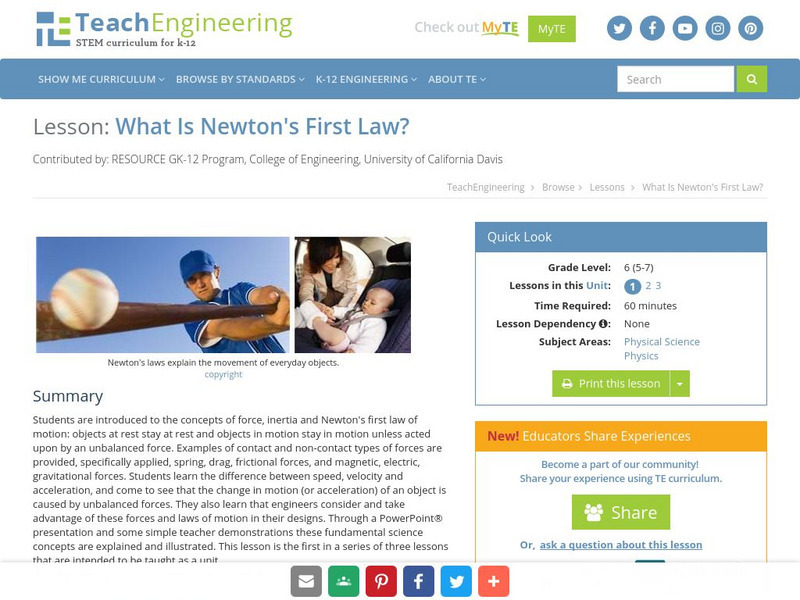Hi, what do you want to do?
Physics Classroom
The Physics Classroom: Describing Motion With Words
This lesson from the Glenbrook South High School gives a nice review and detailed explanation of velocity, speed, distance, displacement, and acceleration. A good introduction to the "language of Kinematics."
BBC
Bbc: Gcse Bitesize: Motion
This lesson focuses on motion including definitions, how to calculate the change in velocity and the average acceleration, and a link to an assessment.
ACT360 Media
Act Den: Speed Freak Lesson Plan
Use Paint Shop Pro to "Experiment with the deformations and effects so it looks as if an object in the photo is in motion." There are many interesting filters and effects that can be used to edit images to produce cool photo features.
Physics Classroom
The Physics Classroom: Circular and Satellite Motion: Satellite Motion Math
In this interactive physics tutorial, students explore the variety of mathematical equations that describe the motion of satellites.
TeachEngineering
Teach Engineering: Kinetic and Potential Energy of Motion
In this lesson, students are introduced to both potential energy and kinetic energy as forms of mechanical energy. A hands-on activity demonstrates how potential energy can change into kinetic energy by swinging a pendulum, illustrating...
Sophia Learning
Sophia: Relating Rotational & Tangential Speed Mathematically
A video lesson relating rotational speed and tangential speed. Video derives equation to show how to find tangential speed based on rotational speed. [4:32]
TeachEngineering
Teach Engineering: What's Up With All This Traffic?
Expanding on the topic of objects in motion covering Newton's laws of motion, acceleration and velocity, which are taught starting in third grade, students are introduced to new concepts of speed, density, level of service (LOS) (quality...
Physics Classroom
The Physics Classroom: 1 D Kinematics: Table of Contents
Learners examine motion with words, equations, diagrams, and graphs. Some topics investigated are position, velocity, acceleration, and free fall. The tutorial consists of lessons and problems to check for understanding.
Sophia Learning
Sophia: Instantaneous Velocity: Lesson 1
This lesson introduces the concept of instantaneous velocity without the use of calculus. It is 1 of 2 in the series titled "Instantaneous Velocity."
BBC
Bbc: Gcse Bitesize: Forces, Acceleration and Newton's Laws Aqa
This lesson focuses on Newton's First Law: an object remains in the same state of motion unless a resultant force acts on it. If the resultant force on an object is zero, this means: a stationary object stays stationary; a moving object...
Other
Usra: Lunar and Planetary Institute: Hot Spot Activity [Pdf]
In this instructional activity, students will measure the distances between Hawaiian islands, and convert and graph their data to determine the speed of the Pacific Plate.
Other
Ward's Science: Speedy Energy
This is an interactive inquiry where students will investigate the speed of an object and the energy it exerts as it crashes into other objects. Students will understand that the more speed an object has, the more energy it has in a...
Physics Classroom
The Physics Classroom: 1 D Kinematics: Meaning of Slope for a v T Graph
In this part of a physics lesson, examine how the actual slope value of any straight line on a velocity-time graph is the acceleration of the object.
TeachEngineering
Teach Engineering: Ring Around the Rosie
Students learn the concept of angular momentum and its correlation to mass, velocity and radius. They experiment with rotation and an object's mass distribution. In an associated literacy activity, students use basic methods of...
TeachEngineering
Teach Engineering: May the Force Be With You: Drag
This lesson explores the drag force on airplanes. The learners will be introduced to the concept of conservation of energy and how it relates to drag. Students will explore the relationship between drag and the shape, speed and size of...
Science and Mathematics Initiative for Learning Enhancement (SMILE)
Smile: How to Speed Up a Slow Grandfather: The Pendulum
In this lesson plan pupils are "given one hour to solve a problem that a has caused a huge drop in sales" for a clock company. All clocks are five minutes slow. Because of this, they must find a way to put the clock back on time without...
TeachEngineering
Teach Engineering: What Is Newton's First Law?
Students are introduced to the concepts of force, inertia, and Newton's first law of motion: objects at rest stay at rest and objects in motion stay in motion unless acted upon by an unbalanced force.This instructional activity is the...
McREL International
Mc Rel: Whelmer #33 Learning Activity: Density Balloon
A simple activity that investigates the effect of heat on the volume of a gas. The activity is presented in lesson plan format that meets NSES standards.
TED Talks
Ted: Ted Ed: The Fundamentals of Space Time: Part 2
In this second installment of a three-part series on space-time, CERN scientists Andrew Pontzen and Tom Whyntie use a space-time diagram to analyze the sometimes confounding motion of light. [4:50]
Annenberg Foundation
Annenberg Learner: Design a Roller Coaster
An interactive lesson where students design and build their own virtual roller coaster. Choose the height of the hills. the shape of the hills. and loop to find out if you successfully used physics concepts to pass the safety and fun...
McREL International
Mc Rel: Whelmer #9 Learning Activity: Nickel Karate
An easy to do activity that investigates the basic theories of inertia. The activity is in lesson plan format that meets NSES standards.
McREL International
Mc Rel: Whelmer #12 Learning Activity: Bernoulli Cans
An easy to do activity that investigates Bernoulli's principle. The activity is presented in lesson plan format that meets NSES standards.


















